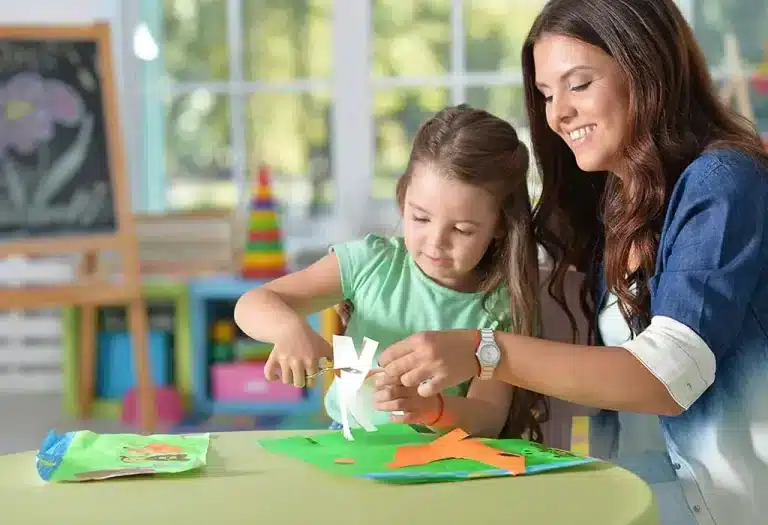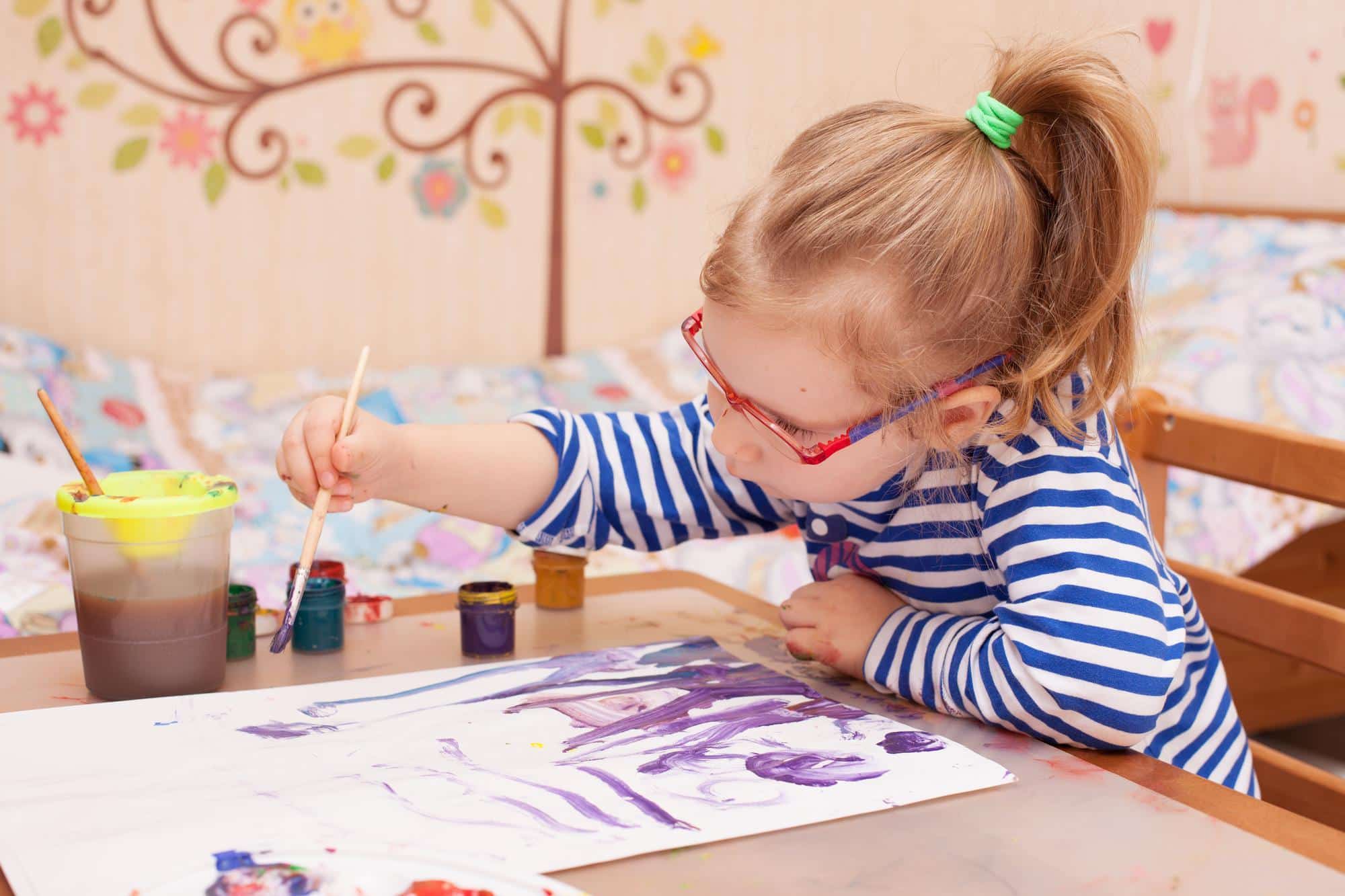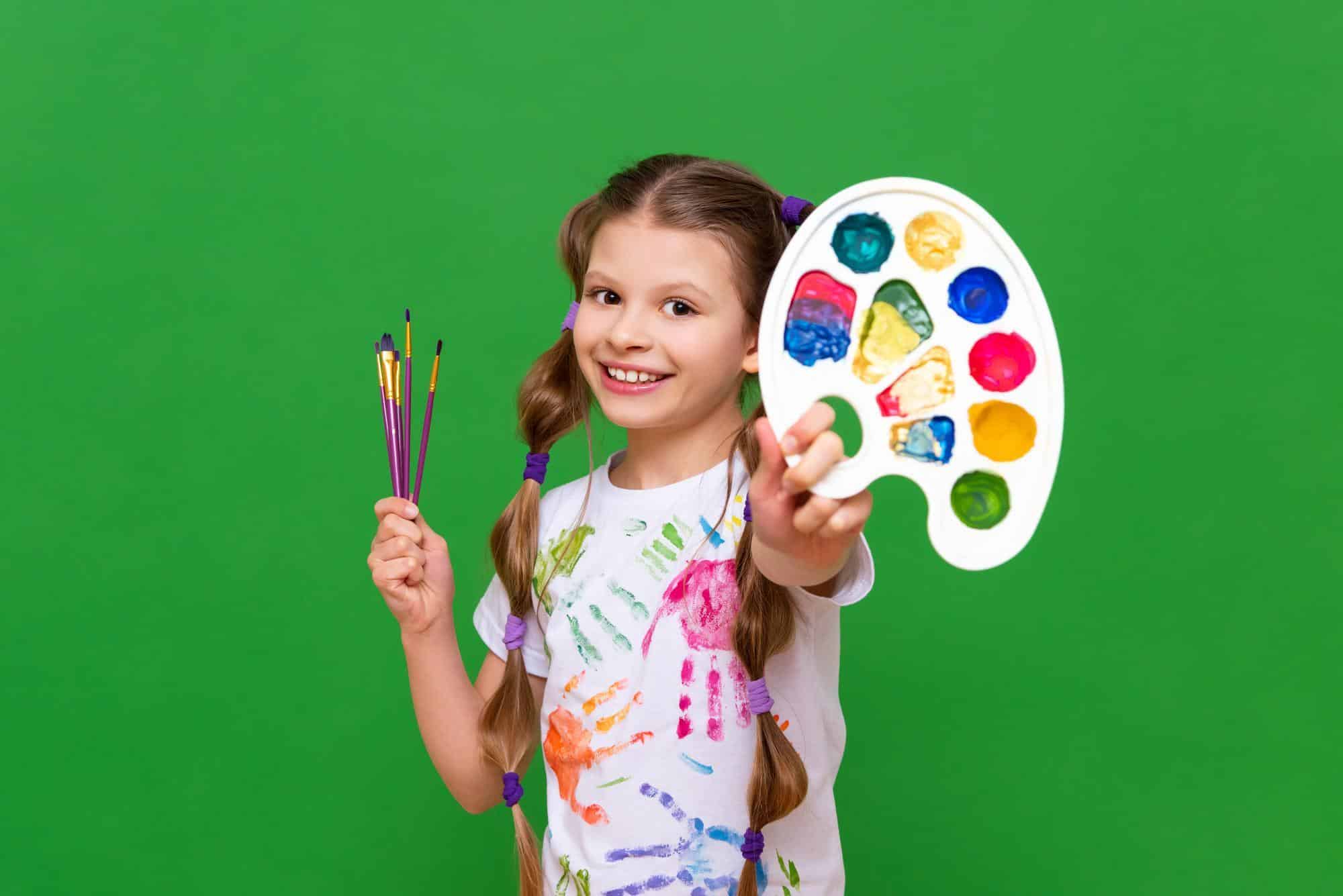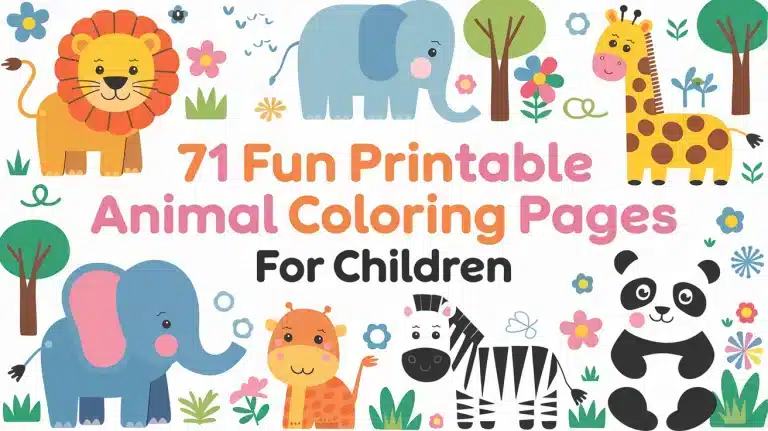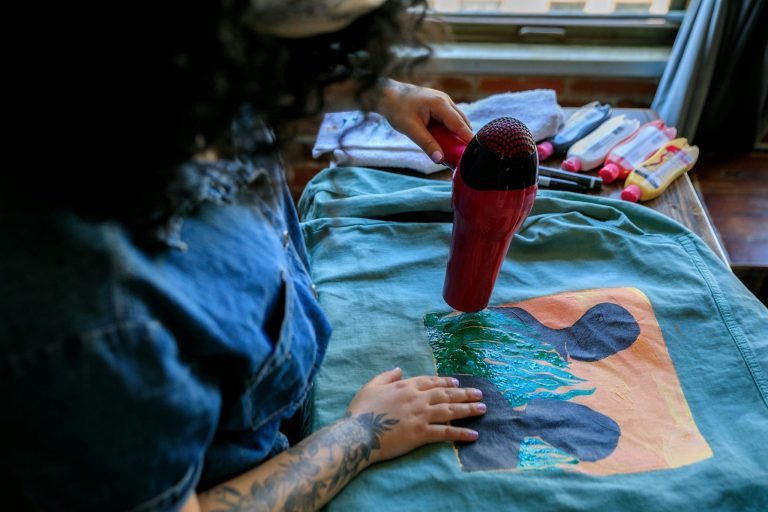A canvas sits untouched, a spectrum of colors waiting, a child’s imagination stirring with potential. In their hands lies more than a brush; it’s a key to unlocking a world of creativity, resilience, and expression.
As they mix and apply paint to canvas, children are not just learning artistry; they are enhancing critical life skills, fostering emotional growth, and broadening their cognitive horizons.
The Value of Art in Early Childhood
Engaging in the arts from a young age can stimulate a child’s cognitive development, spark creativity, and promote innovative thinking. Immersion in painting particularly enriches a child’s sensory experiences, providing a tactile and visual feast.
A brush stroke becomes a lesson in fine motor skills. Mastery of these skills through painting can directly translate to academic success. As children mix colors, they discover the basics of color theory, an element of visual literacy that has broad applications.
Painting allows youngsters to express emotions that they may not yet articulate verbally. This form of emotional processing can build empathy, bolster self-esteem, and serve as a cathartic release.
Through the act of painting, children learn to value the process over the product, appreciating the importance of patience and perseverance. Such experiences cultivate a growth mindset, teaching them that effort and learning from mistakes.
The Benefits of Painting for Children
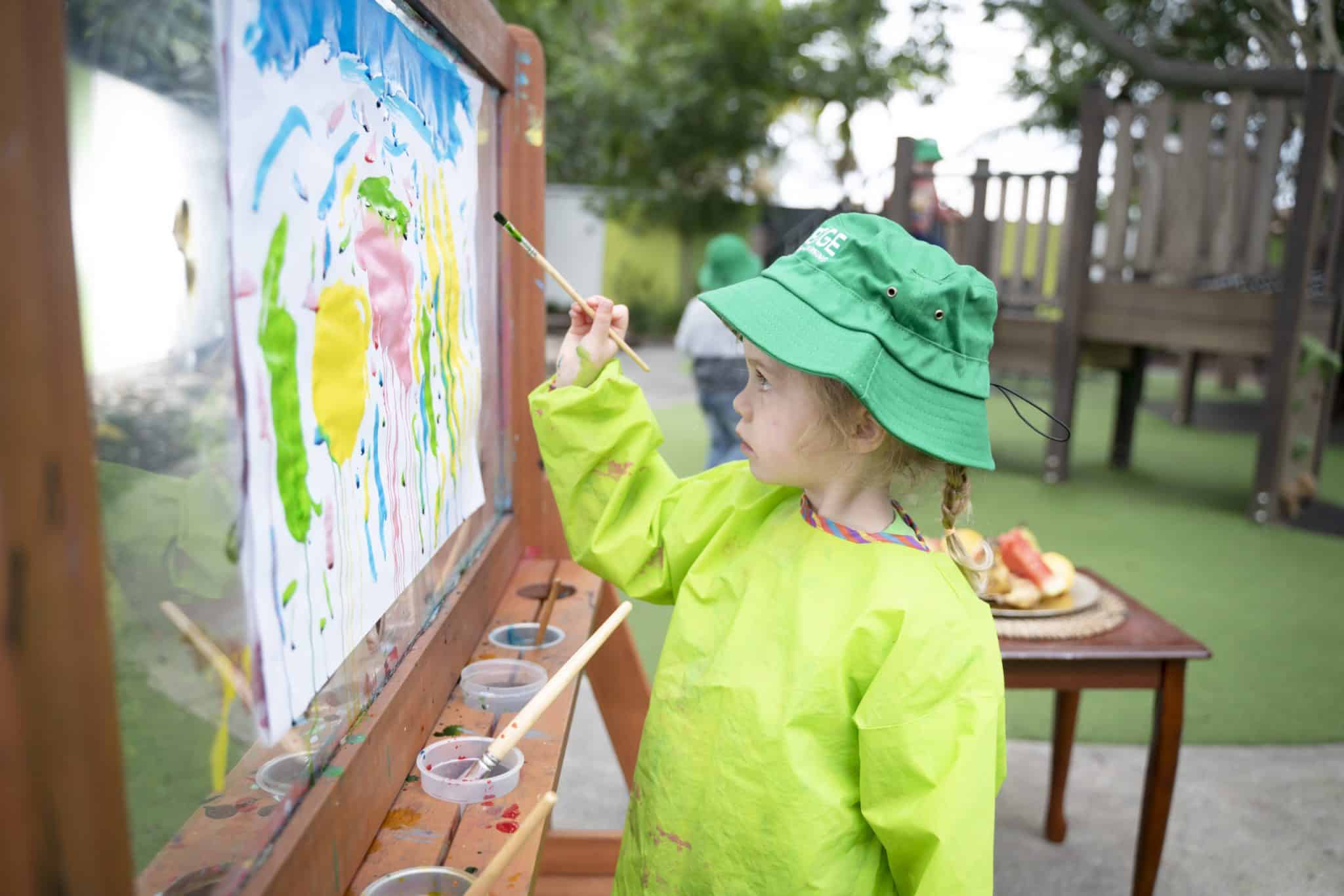
Painting offers a tactile experience that refines motor skills and hand-eye coordination. The deliberate act of holding brushes and applying paint with precision enhances a child’s fine muscle control. As they concentrate on their artwork, they also develop focus and attention to detail.
Enhances Fine Motor Skills
Painting demands precision and control, fostering fine motor development as children maneuver brushes and apply color. As they dip, swirl, and sweep paint across paper or canvas, young artists engage and strengthen their hand muscles, promoting agility.
Through careful manipulation of painting tools, children enhance grip strength, wrist movement, and finger coordination—a fine-tuning of motor abilities essential for growth.
Fosters Emotional Expression
One can witness a narrative unfolding in colorful strokes and chosen hues—a tale of joy, sorrow, or curiosity. Children channel their emotions into their art, giving caregivers insight into their psychological landscape. As they brush paint across a surface, they are not just applying color but releasing stress and finding solace in the creativity of the moment.
In a society that frequently values verbal over visual communication, painting empowers children to express complexities that might otherwise remain hidden. It teaches them to communicate subtleties that words can sometimes fail to capture.
Boosts Creativity and Innovation
Painting unlocks a child’s imaginative capabilities, expanding their ability to think beyond the conventional. As children experiment with colors, they indulge their curiosity and problem-solving skills. They learn the delicate art of turning mistakes into opportunities, an invaluable life skill.
The canvas becomes an arena where children dare to innovate, combining vivid colors and shapes into creations that reflect their inner world. This tangible representation of their thoughts encourages them to think more abstractly.
Understanding that art has no boundaries; children embrace the courage to create without fear of judgment. This nurtures risk-taking and original thought, traits that are imperative in a world that increasingly values unconventional approaches and creative solutions to complex problems.
Getting Started with Painting
Introducing your child to paint can begin simply with a modest selection of washable paints, brushes of different sizes, and thick paper designed for the purpose. Keeping the setup basic and approachable ensures that the initial exploration of painting is pure joy.
Establish a comfortable, unrestricted space to encourage positive, exploratory painting experiences for your child. This sanctuary of creativity becomes a foundation upon which they can build their confidence and artistic voice. Consider decorating this area with inspirational bedroom canvas art that can spark their imagination and show them the potential of their own creations.
Choosing the Right Materials
Selecting appropriate painting supplies is essential for your child’s comfort and creative exploration.
Here’s a list of basic materials:
- Washable Paints: Non-toxic, easy-to-clean options allow worry-free experimentation.
- Variety of Brushes: Offering brushes in different sizes and shapes encourages diverse stroke techniques.
- Heavyweight Paper: Thick paper designed for painting absorbs moisture well and resists tearing.
- Palette: A simple palette enables color mixing and promotes understanding of color theory.
- Protective Apron: A child-sized apron protects clothing and fosters a sense of professionalism.
- Easel or Table Cover: Providing a dedicated space for art helps define the creative workspace.
Setting Up a Painting Space at Home
Creating a dedicated painting area at home can stimulate your child’s creativity, offering a special zone for artistic expression.
Here’s a step-by-step guide:
- Choose the Right Location: Select an area that’s easy to clean and out of high-traffic zones to establish a serene environment. A corner in a less-used room can be ideal.
- Optimize Lighting: Place the painting station near a window to benefit from natural light. Supplement this with task lighting to enhance visibility at all times of the day.
- Implement Storage Solutions: Use storage that is accessible for your child but out of reach from younger siblings. This can include shelves, drawers, or containers that are clearly labeled.
- Set Up a Stable Surface: Provide a robust table or easel as a focal point in the space. Anchor this setup with a non-slip floor covering to prevent any accidents.
- Establish Clear Rules: Define ‘painting rules’ such as wearing an apron, using materials appropriately, and cleaning up after each session to foster responsibility.
- Display Artwork: Celebrate your child’s artistic efforts by displaying their art. Set up a rotating gallery on the wall or a special shelf where new creations can be admired.
Practical Painting Activities
Introduce your child to color mixing through playful experiments with primary colors to deepen their understanding of the color wheel.
Expand their skills by engaging in themed painting projects, which not only cultivate creativity but also help to reinforce lessons from other educational subjects, like science or history, through a visual medium.
Organize a family art showcase, with periodic exhibitions as a rewarding platform for your child’s developing talents and hard work.
Fun Projects for Different Age Groups
Engage children of all ages with age-appropriate art projects that cater to their developmental stages and interests.
For toddlers, finger painting delights with its sensory experience and helps develop fine motor skills.
Children aged five to seven can enjoy paint-by-number kits, a fun way to combine art creation with learning numbers. These kits can be customized, too, with custom paint by number options that allow personalization.
Kids between eight and ten can create mixed-media landscapes using natural elements they find, while preteens may explore abstract art, experimenting with various brush strokes and color palettes.
Educational Aspects of Painting
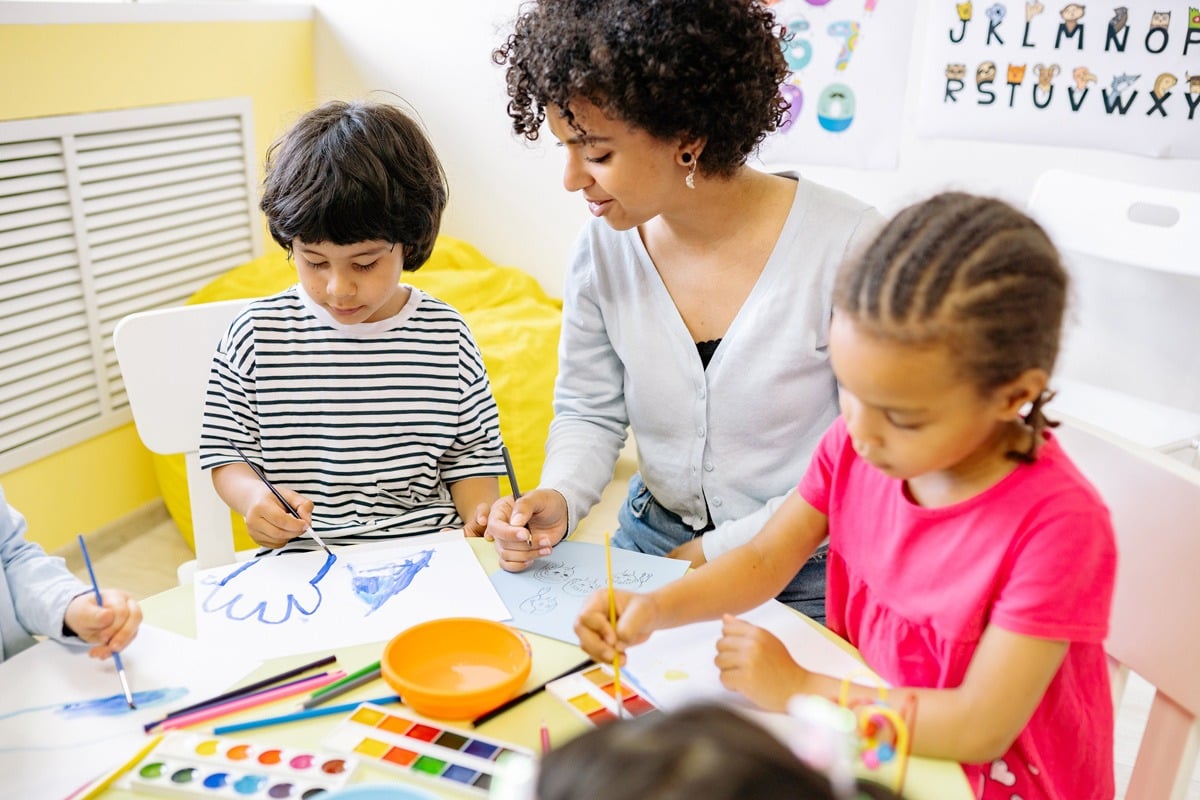
Young painters learn about geometry and color theory by manipulating colors and shapes, correlating art with mathematical concepts. They also develop planning and organizational skills as they transform blank canvases into thoughtful compositions.
Learning Colors and Textures
Paint allows for tactile learning, inviting children to touch and feel the differences between smooth and coarse surfaces. Combining different hues teaches them about the color wheel’s interplay, from primary colors (red, yellow, and blue) to complex mixtures.
During painting sessions, young artists experiment with thickness and thinness, observing how it change the paint’s texture and appearance on paper or canvas, fostering an appreciation for the tactile properties of materials.
These experiences root the concepts of light and shadow warm and cool colors, creating a foundation that can inform their fashion choices, home decoration preferences, or even future design-oriented careers.
Incorporating Lessons on Art History
Introducing art history to children can enrich their understanding of painting as a form of cultural expression.
Here’s how you can integrate art history:
- Start with art storybooks: Find books that weave art history into engaging stories for children.
- Visit local museums or galleries: Give real-life context to art history by observing different art styles and periods.
- Discuss artists’ backgrounds: Humanize the learning experience by talking about artists’ lives and motivations.
- Introduce art from around the world: Broaden their perspective with international art, discussing similarities and differences.
- Make timeline projects: Help children visualize the progression and evolution of art by creating timelines.
Resources for Parents
Navigating the wealth of resources available to help cultivate your child’s artistic skills can be streamlined with a focus on accessibility.
Here’s a list of practical resources:
- Online Tutorials: Search for tutorials specifically designed for young learners, breaking down painting techniques into simple, manageable steps.
- Library Art Books: Visit your local library to find art books for children, which often include interactive activities to engage young minds.
- Parent-Child Art Classes: Look into art classes at community centers that offer parent-child sessions, allowing you to actively participate in your child’s artistic development.
- Educational Apps: Explore apps that gamify learning about art history and painting techniques, making them fun and educational.
- Simple and Adaptable Resources: Utilize easy-to-access resources that cater to the unique pace and interests of each child, ensuring a flexible and enjoyable learning path.
Conclusion
The act of painting ignites the imagination, a priceless resource in every child’s development. Painting provides more than aesthetic value; it’s an educational tool that fosters cognitive and motor skills.
Through the strokes of a brush, children express emotions and ideas. As they mix colors and conceive images, kids learn problem-solving, gaining confidence in their creative decisions. Empowering children to paint is to celebrate their individuality and invest in their holistic growth.

